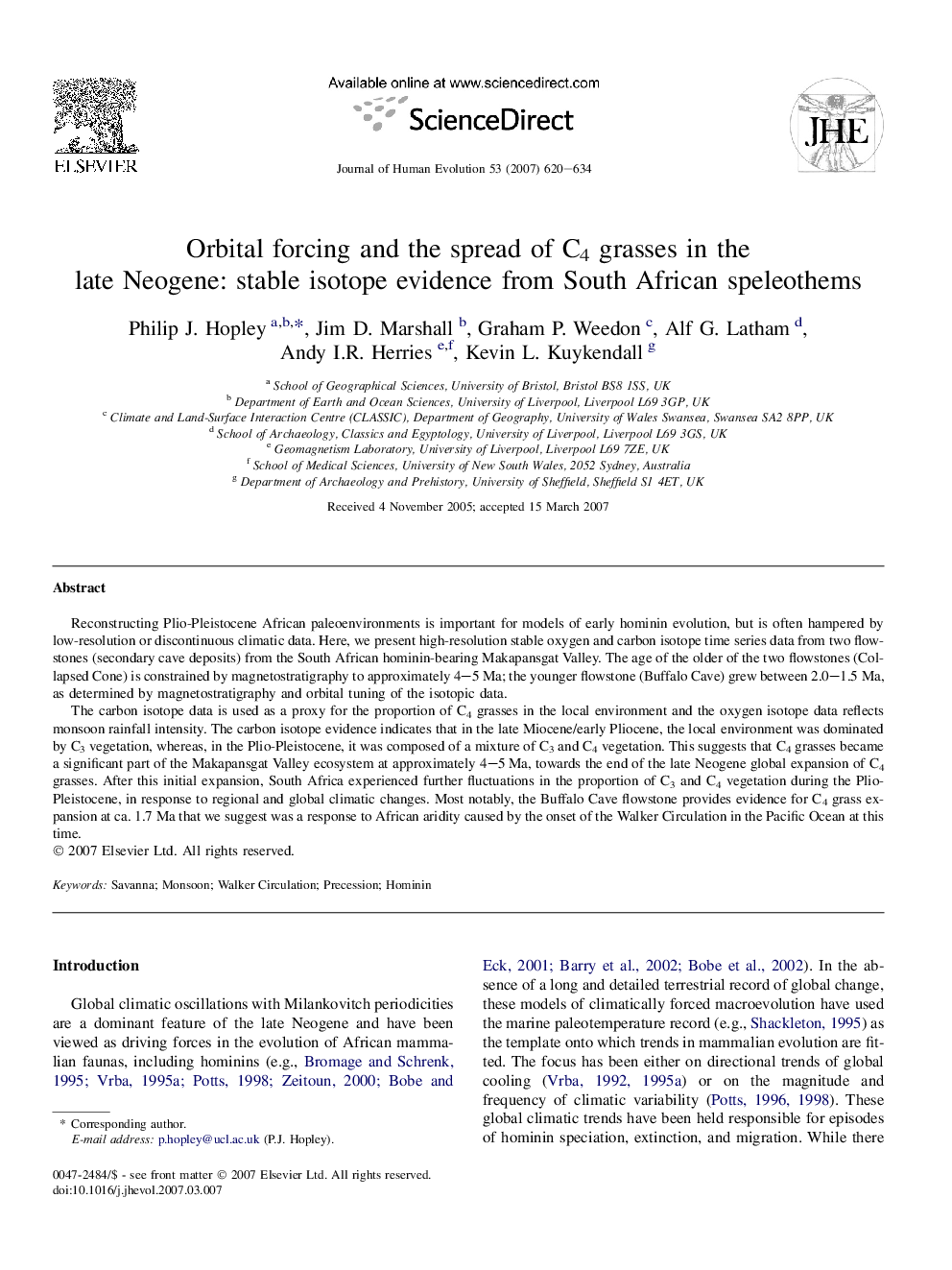| کد مقاله | کد نشریه | سال انتشار | مقاله انگلیسی | نسخه تمام متن |
|---|---|---|---|---|
| 4557201 | 1329533 | 2007 | 15 صفحه PDF | دانلود رایگان |

Reconstructing Plio-Pleistocene African paleoenvironments is important for models of early hominin evolution, but is often hampered by low-resolution or discontinuous climatic data. Here, we present high-resolution stable oxygen and carbon isotope time series data from two flowstones (secondary cave deposits) from the South African hominin-bearing Makapansgat Valley. The age of the older of the two flowstones (Collapsed Cone) is constrained by magnetostratigraphy to approximately 4–5 Ma; the younger flowstone (Buffalo Cave) grew between 2.0–1.5 Ma, as determined by magnetostratigraphy and orbital tuning of the isotopic data.The carbon isotope data is used as a proxy for the proportion of C4 grasses in the local environment and the oxygen isotope data reflects monsoon rainfall intensity. The carbon isotope evidence indicates that in the late Miocene/early Pliocene, the local environment was dominated by C3 vegetation, whereas, in the Plio-Pleistocene, it was composed of a mixture of C3 and C4 vegetation. This suggests that C4 grasses became a significant part of the Makapansgat Valley ecosystem at approximately 4–5 Ma, towards the end of the late Neogene global expansion of C4 grasses. After this initial expansion, South Africa experienced further fluctuations in the proportion of C3 and C4 vegetation during the Plio-Pleistocene, in response to regional and global climatic changes. Most notably, the Buffalo Cave flowstone provides evidence for C4 grass expansion at ca. 1.7 Ma that we suggest was a response to African aridity caused by the onset of the Walker Circulation in the Pacific Ocean at this time.
Journal: Journal of Human Evolution - Volume 53, Issue 5, November 2007, Pages 620–634